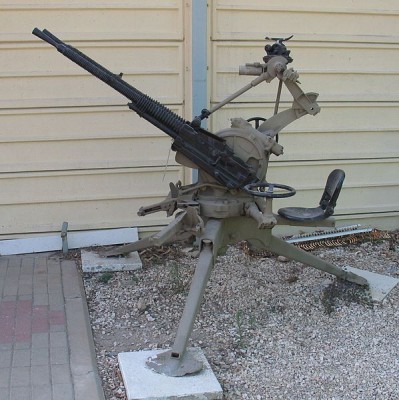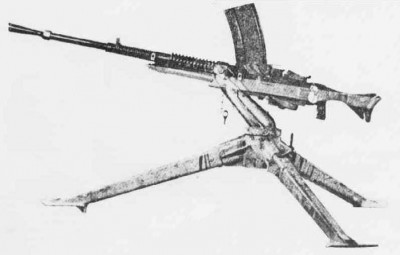Title: Mitrailleuse Hotchkiss de 13,2 mm modèle 1929
Place of origin:France
User countries:
Wars: World War II
Production history:
Designer:Hotchkiss et Cie
Designed: France: c. 1926
Japan: 1933
Variants Japan: 13.2mm machine gun type 93
Basic data:
Weight Type 93:
Gun itself: 42 kg.
single barrel complete: 113 - 213 kg
double barrel set: 314 kg
Four-barrel set: 1163 kg
Total length of Type 93: 1410 mm
Barrel length: 1003 mm
Type of cartridge: Single
Hub length: 99 mm
Projectile weight:
French: 51g
Japanese: 44,5 g for incendiary to 51,8 g for training and anti-tank
Calibre 13.2 mm
Firing principle: gas extraction from the barrel
Elevation Model 1929: -10° to +90°
Type 93: -15° to +85°
Cadence Model 1929:
450 rounds/min theoretically
200 shots/min practical
Impact velocity Model 1929: 790.0 - 800.1 m/s
Type 93: 805.0 m/s
Effective Range Model 1929:
7200 m at 45° elevation
Altitude range against aircraft: 4200 m
Type 93:
6000 m at 45° elevation
6500 m at 50° elevation
Altitude range against aircraft at 85° elevation:
3980 m effective
4500 m maximum
Maximum range 7200 m at 45° elevation for Model 1929
Ammunition supply 30-round clip
sources:
www.fischer-tropsch.org
www.fischer-tropsch.org
http://navweaps.com/Weapons/WNJAP_13mm-76_mg.htm
cs.wikipedia.org

